
Sri Lanka has long been an important region for sourcing-colored gemstones. In addition to producing its own gemstones, it also serves as a hub connecting to East Africa. In earlier years, due to government restrictions on domestic mining, many local Muslim traders began traveling to countries such as Madagascar, Mozambique, and other African nations to purchase rough stones, which were then brought back to Sri Lanka for cutting and polishing. Over time, Sri Lanka has become a significant wholesale market for colored gemstones in Asia, second only to Thailand, and is also a major producer and trader of sapphires.
1. Changes in the Upstream Segment of the Gemstone Supply Chain
1.1 Types of Buyers: Live Streamers, Online Purchasing Agents, Studios, Professional Buyers
Following the COVID-19 pandemic, around 2021, the first wave of livestream gemstone sales began. The main participants were Chinese nationals living overseas and some former tour guides or small restaurant owners in Sri Lanka who pivoted due to pandemic-related uncertainties. Simultaneously, the upstream gemstone market had seen a few years of shutdowns, creating pent-up demand. Suppliers, who previously disallowed filming and preferred direct sales, began allowing buyers to photograph gemstones and conduct transactions on-site. These changes lowered the entry barriers for newcomers in the upstream gemstone industry, allowing participation without large capital investments.
Around 2022, as China reopened after the pandemic, many Online Purchasing Agents began seeking new opportunities. Sri Lanka, as a gemstone-producing country, became a hot spot after gaining exposure through livestreams. By 2023, Sri Lanka’s Beruwala wholesale gemstone market would see nearly 500 Chinese buyers in a single day, most of them online Purchasing Agents, often arriving in large crowds.
Some enterprising Chinese individuals rented local villas and established studios (locally referred to as "studio owners") to provide free food and accommodation for agents. These agents could then film and sell gemstones from the studios or local markets. Prices were comparable to those in Shenzhen or Donghai wholesale markets in China, sometimes even higher. However, due to the agents' lack of gemstone expertise, it became common to see low-value stones sold at high prices, leading to market disruptions. Rental prices for offices and villas, as well as gemstone prices themselves, skyrocketed.
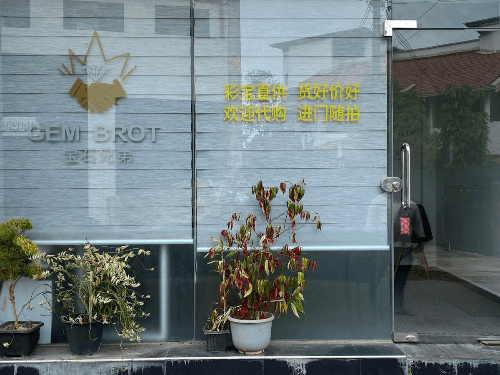
Studio owners usually purchase their own gemstones to stock and supply to agents. They often bid higher, with inconsistent quality, and mostly smaller sizes (typically under 1–2 carats, with 3–5 carats being less common).
Professional buyers, on the other hand, typically own retail stores, jewelry brands, or gemstone clubs in their home countries. These international wholesalers enter the market with significant capital and specific quality and price expectations. They hold strong bargaining power and are key revenue sources for gemstone intermediaries.
Professional Buyer Analysis at Beruwala Market
According to KELLY GEMS Exchange statistics, market staff conduct headcounts daily at 2 PM. From March to May 2024, the daily buyer counts averaged: 100 Chinese buyers, 20 Indian buyers, 1–2 Western buyers, and about 5 local Sri Lankan buyers. This shows a significant decrease in Chinese buyer volume since the peak around 2022. Based on current market conditions, buyer behavior and preferences vary by nationality.
1.2 Buying Behavior by Nationality
Colored gemstones are part of a global trade, and buyer preferences differ by market:
1. Chinese Buyers: Generally purchase sapphires in a wide range of colors, especially blue sapphires, along with semi-precious stones like aquamarine, Mahenge spinel, tsavorite, garnet, and moonstone. They are highly quality-conscious. For example, blue sapphires are typically selected individually, ranging from 1 to 10 carats, with extreme caution and sensitivity to price.
2. Indian Buyers: Prefer yellow and blue sapphires in light to dark shades. They are less strict on quality—visible inclusions are acceptable. They often buy stones of 5–10 carats and negotiate bulk deals (50–100 carats per package).
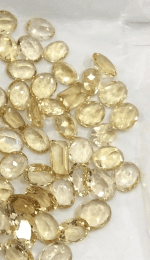
3. Western Buyers: Purchase blue sapphires, padparadscha, and pink sapphires. Quality expectations vary. Storeowners for decorative jewelry may buy 1–2 carat stones with visible inclusions, favoring natural, minimalistic designs with silver and organic materials. However, high-end custom jewelers are extremely selective—no visible inclusions are acceptable, and purchases are made stone-by-stone.
2. Changes in Intermediary Types: Traditional, Small Table, New Intermediaries, and Studio-Intermediaries
Traditional intermediaries fall into two categories:
-- Traditional (Old) Intermediaries: Operate offices and offer full services—airport pickups, transportation between markets and lodgings, access to private suppliers, itinerary planning, negotiation assistance, certification and customs clearance. Licensed intermediaries pay taxes and annual license fees, so service fees are typically over 10% of transaction value, paid by the seller. These fees are less negotiable.
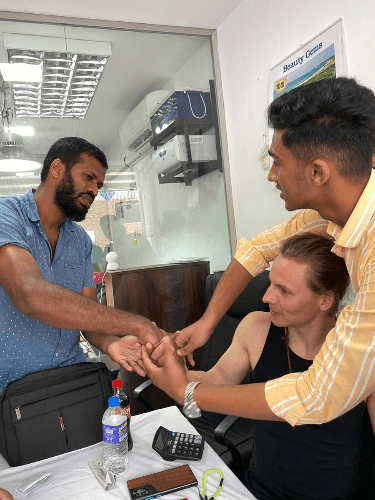
-- Small Table Intermediaries: Rent outdoor tables only, offer minimal services, and often lack business licenses or the ability to handle legal customs procedures. Fees include table rent (paid by the buyer) plus a 5–10% seller’s commission. Problem resolution is difficult, and sellers often avoid these intermediaries due to risk. High-quality stones are rarely seen in such settings.
-- New Intermediaries emerged around 2021, with the influx of Chinese buyers. Some young Sri Lankans began exaggerating their connections to attract new buyers. They insisted that buyers rent offices, stay in Sri Lanka long-term, and arrange their own transport. This caused office and villa rents to surge:
* Before 2019: Offices rented for $140– $376 USD/month
* After 2021: $418– $1,160 USD/month
* Villas: $167– $278 USD → Now $487–$1645 USD/month
Despite the rising costs, intermediary fees remain 10–15%, with services often reduced to self-service. Some new intermediaries don’t even accompany buyers to offices. Although some buyers believe they’re only paying 5% commissions, this often doesn’t reflect reality.
-- Studio-Intermediaries are hybrid models created when studio owners can't meet the volume or variety demands of their agents. Chinese intermediaries step in to bridge the gap. These studios are typically located on upper floors or off the main roads, as prime storefronts are rented by established intermediaries or those willing to pay high rents. This type of intermediary adds a studio owner’s markup to the standard 10% fee, pushing the total commission to 15–25%. Many of them lack gemstone knowledge but are highly persuasive salespeople.
3. Changes in Gemstone Prices: Surge in Rough Stone Costs
There are two main sources of rough stones in Sri Lanka:
1. Domestically mined
2. Imported by Sri Lankan traders from East Africa
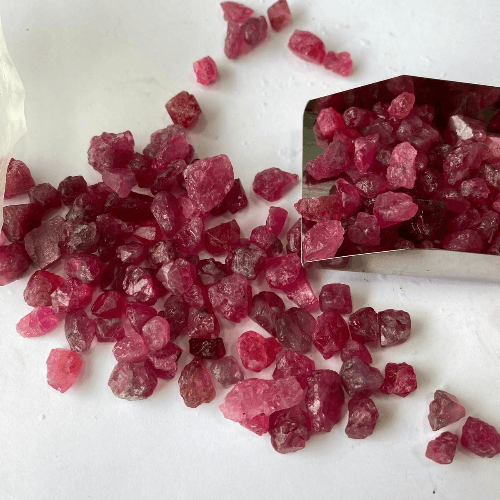
Following the country’s 2021 bankruptcy, the Sri Lankan rupee devalued by nearly 44.35%. By 2023, exchange rates began to stabilize. However, both external and internal cost pressures emerged:
External: Currency depreciation increased the cost of imported rough stones.
Internal: As part of an IMF debt restructuring agreement, Sri Lanka raised taxes. In 2023, an 18% tax was imposed on gemstones, and the cost of all related licenses (mining rights, gem trade operations) increased significantly.
These internal and external pressures led to soaring rough gemstone prices in Sri Lanka.
With the rise of livestream and Online Purchasing Agents, demand for colored gemstones surged, leading to a supply-demand imbalance. The market couldn’t keep up, and prices skyrocketed. Many Online Purchasing Agents residing in Sri Lanka tried seeking cheaper sources, but due to misjudging market prices, they often ended up overpaying, inadvertently inflating the wholesale prices of small gemstones.
4. Conclusion
According to ongoing analysis by KELLY GEMS Exchange as of September 2024, the foot traffic in Beruwala’s colored gemstone wholesale market has visibly declined since June–July 2024. Many studios that previously catered to Online Purchasing Agents have withdrawn, with some relocating to Pakistan and Zambia to replicate the same business model.
Amid global economic downturns and the lack of strong buyers in the upstream segment, the September 2024 Bangkok show saw underwhelming sales. Although the Hong Kong show had visible traffic, actual transactions were low. The market is expected to experience price fluctuations in the next six months. However, in the author's view, high-quality gemstones will remain resilient due to their broader global demand and diverse buyer base not reliant on a single market.
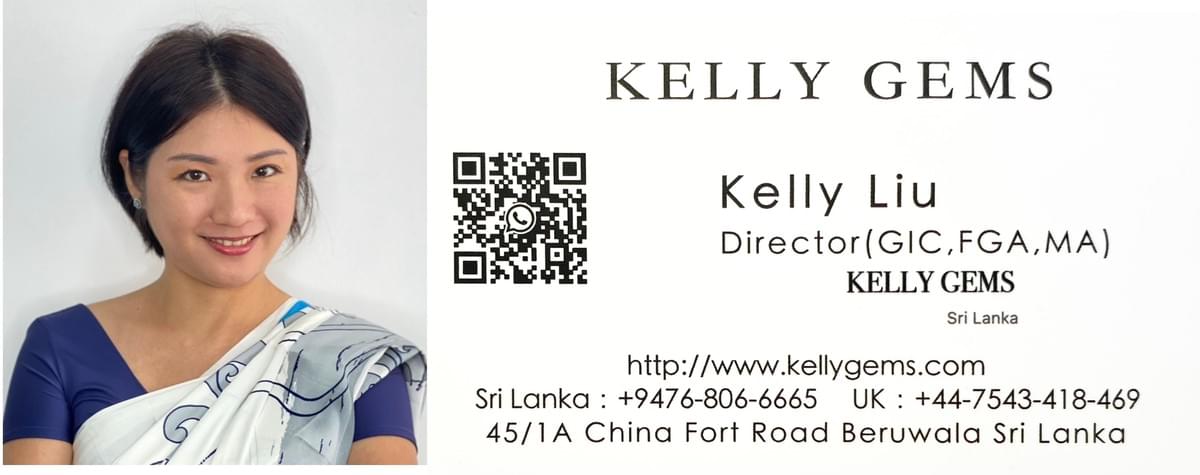
References
[1] IQBAL ATHAS, CHRIS LIAKOS, RHEA MOGUL AND DANIELA GONZALEZ-ROMAN. Sri Lanka is 'bankrupt,' Prime Minister says [N]. CNN CABLE NEWS NETWORK,2022.
[2] ANDY MUKHERJEE. Insolvent Sri Lanka Should Cancel Its Central Bank [N]. Bloomberg Opinion,2022.
[3] CENTRAL BANK OF SRI LANKA. Indicative Rate of the USD/LKR SPOT Exchange Rate[DB/OL].CENTRAL BANK OF SRI LANKA,2022.
[4] Kristalina Georgieva. IMF Executive Board Approves US$3 Billion Under the New Extended Fund Facility (EFF) Arrangement for Sri Lanka [EB/OL]. International Monetary Fund,2023
[5] NIKKEA ASIA. Sri Lanka approves VAT hike to 18% in push for IMF targets[N]. NIKKEA ASIA,2023.

